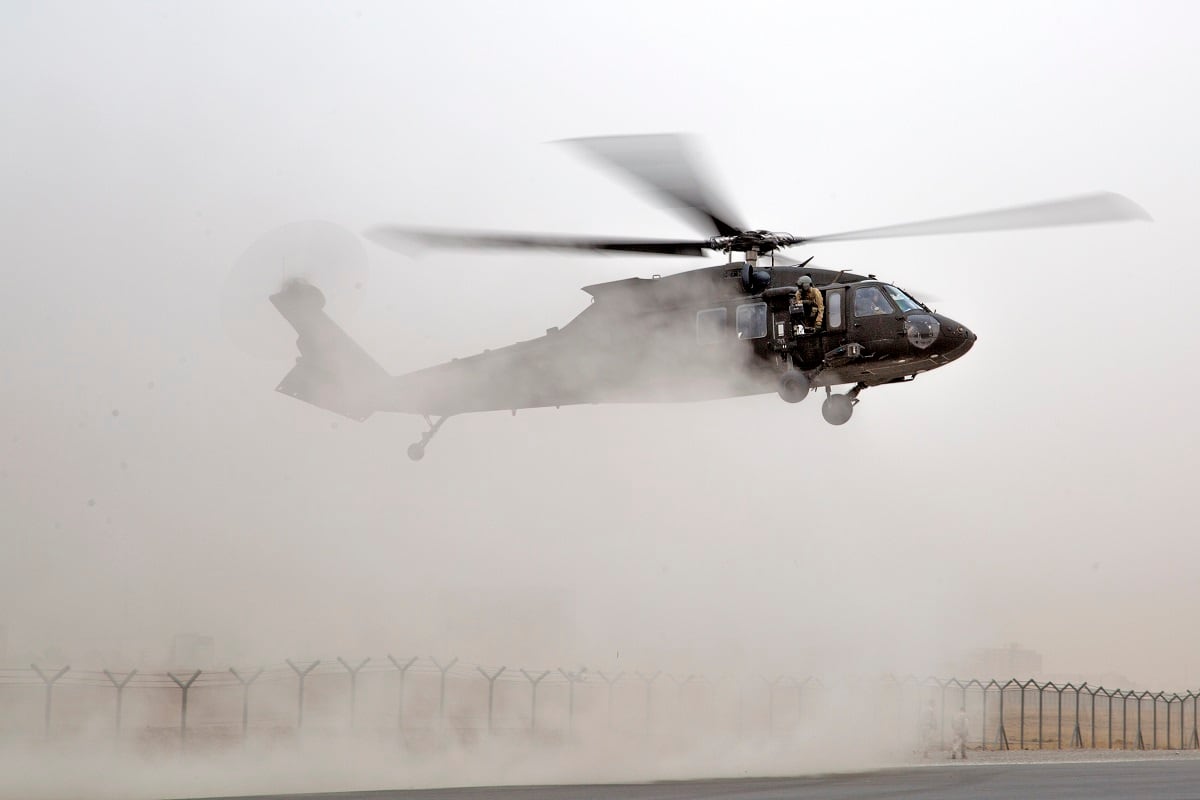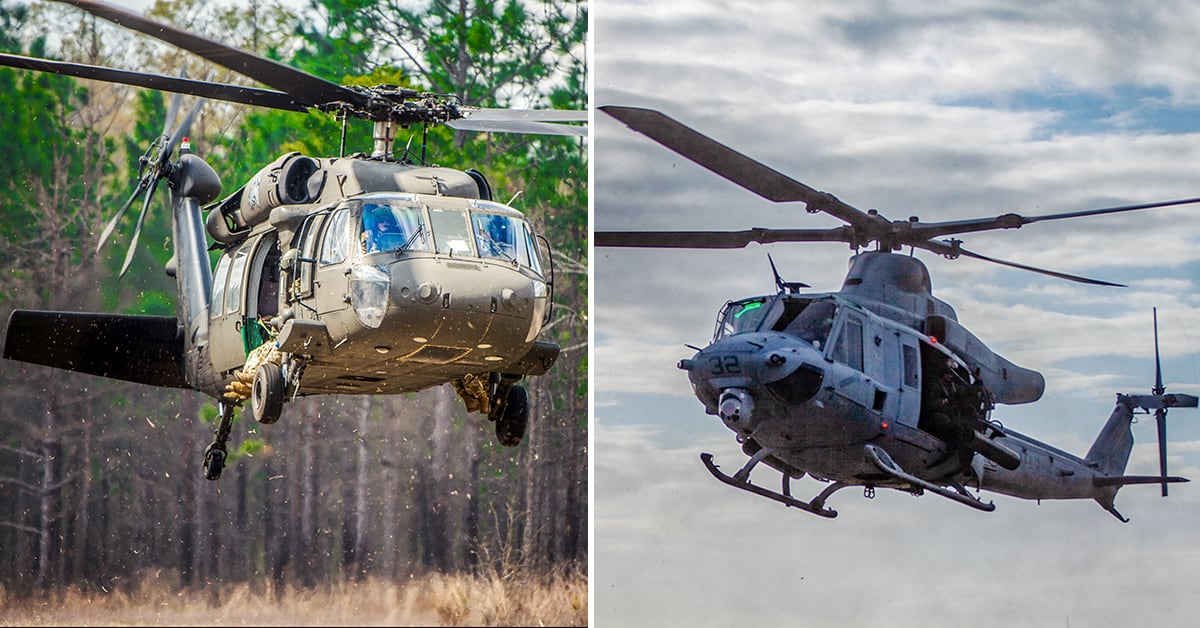New details on the Army’s future vertical lift program show more about what they and their Marine Corps and special operations partners want out of their latest helicopter program, the Future Long Range Assault Aircraft.
The program aims to replace the aging UH-60 Black Hawk helicopter fleet on the Army side and the newer UH-1Y Venom utility helicopter on the Marine Corps side.
Recently the Army posted a “sources sought” on the government website fbo.gov, in it laying out what the Army, Marines and Special Operations Command want from an aircraft they expect to field in 2030 that could still be in service at 2080.
RELATED

If industry can meet the goals of the services, the new aircraft could fly faster, have a wider combat radius and cut medical evacuation times in half.
The maximum speeds for the Venom and Black Hawk now stand at about 180-190 miles per hour with a full payload. The FLRAA is expected to fly at 265 to 322 mph.
There are some differences in the needs of the services, however. The Army has baseline requirements that vastly improve current performance and add range to their fleet.
One such example listed in the posting was for self-deployment, basically stripped down to bare crew and equipment, which would allow pilots to travel between 2,000 and 2,800 miles one way.
And there’s a reason for that goal.
“The self deployment mission represents standard long-range overwater planning for the longest segment of the shortest possible route across the Pacific Ocean, which is from Eareckson, AK (in the Aleutian Island chain) to Chitose, Japan,” according to the posting.
The MEDEVAC mission looks to support the “golden hour” benchmark that planners are considering for casualty evacuations. Research shows that getting wounded troops to higher level medical care within an hour of injury vastly increases their survival rate.
To meet that, the FLRAA would hit maximum air speeds of about 287 miles per hour, which allow aircraft to reach troops out to 100 miles in the golden hour.
Currently, helicopters can only cover about 50 miles within that time window.
Marines and SOCOM are a bit more ambitious in their request than the Army.
The Marines want a gunship version and the currently proposed assault version. They also want in-flight refueling to increase their mission distances.
Marines want a faster helo too, putting their threshold speed at about 340 mph while the Army is comfortable with 290 mph as a starting point.
The same is true for ranges. The Army’s threshold, or minimum, and objective, or goal, sits at 230 miles, and 345 miles. The Marines want 410 miles and 520 miles.
The Army expects to carry 12 soldiers in the aircraft; the Marines are fine with 10.
Technology demonstrators used in recent years have helped the Army get an idea of what might be possible now or in the near future. Defense News, a Military Times sister publication, has reported such demonstrations by Bell Helicopter’s V-280 Valor tiltrotor aircraft and the Sikorsky-Boeing SB-1 Defiant.
The Army wants to have a contract by 2021, an aircraft flying by 2024 and a fielded aircraft by 2030.
That’s just one of two major projects in the Army and joint services Future Vertical Lift program.
At the same time, the Army is also building requirements for its eventual replacement for the AH-64 Apache attack helicopter, the same replacement could also be used for the Marine Corps’ AH-1Z Viper attack helicopter.
That program is known as the Future Attack Reconnaissance Aircraft.
As of late last year, the Army expected to have six designs to choose from by this June and down select to two competing designs by 2021 with flyoffs by late 2022, Defense News reported. The FARA would also look to field by 2030 or before.
Todd South has written about crime, courts, government and the military for multiple publications since 2004 and was named a 2014 Pulitzer finalist for a co-written project on witness intimidation. Todd is a Marine veteran of the Iraq War.





